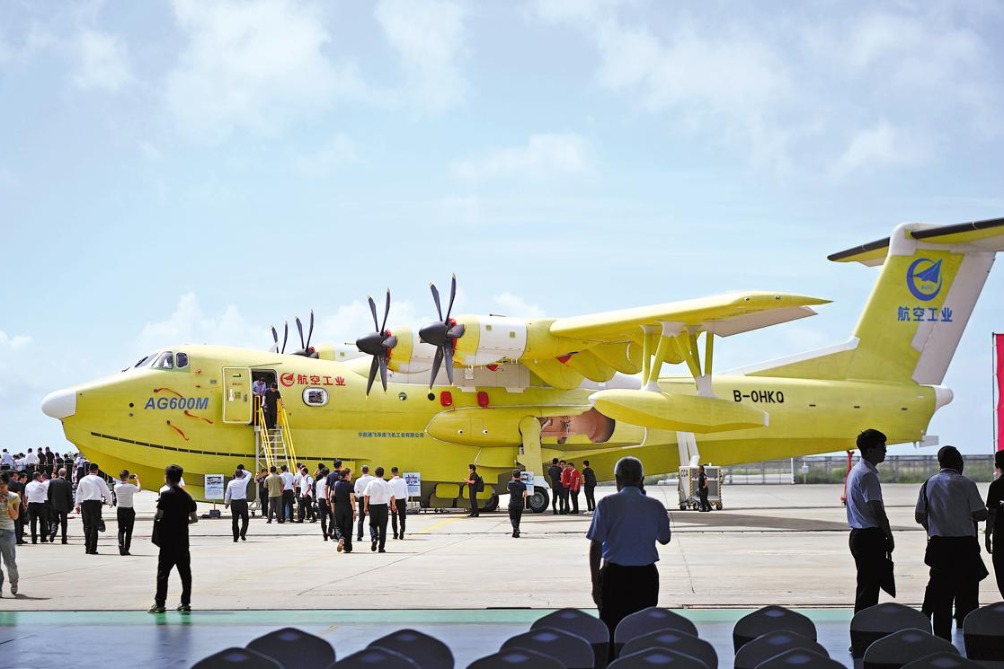Breaking the '80%' barriers


China-Arab economic cooperation is concentrated in the energy sector and needs to be diversified
The first China-Arab States Summit was held in December 2022, during which both parties decided to go all out to jointly build a China-Arab community with a shared future in the new era. The summit has ushered in a new era for the all-round and in-depth development of China-Arab relations. Economic cooperation is the cornerstone and axis of China-Arab relations.
Over the past two decades, economic and trade cooperation between China and the Arab states has made unprecedented, significant achievements in every way. The bilateral trade volume increased 22.5 times from $14.70 billion in 2001 to $330.24 billion in 2021. From 2004 to 2020, Chinese companies' foreign direct investment and FDI stock in the Arab states increased from $180 million and $760 million to $2.83 billion and $21.29 billion respectively, an increase of 16 times and 27 times respectively. Bilateral economic relations are growing far beyond the energy and trade sectors and expanding into the financial, investment, technology and cultural sectors, thus becoming increasingly comprehensive and diversified.
The United States and European countries used to dominate the upper stream of the industry chains of the Arab states. They were mainly engaged in energy exploration, finance, insurance, design, management and consulting, while China excelled at mining, infrastructure construction, manufacturing and processing. However, over the past few years, China has been moving up the industry value chain with greater technological prowess in the fields of trade, investment and project contracting.
That said, we should notice that China-Arab economic collaboration is still at the medium-low level and in its infancy, with huge room for quantity growth and quality improvement. China needs crude oil and natural gas from the Arab states, and the Arab states need manufactured goods from China — this has been the basic feature of bilateral economic relations, which has not changed substantially over the past 30 years. Such a relationship is reflected in the following six"80 percents" in bilateral economic relations. We could say that these"80 percents" are the barriers to the further development of bilateral economic ties.
In the area of two-way investment, from 2005 to 2022, China's foreign direct investment stock in the Arab states hit $50.4 billion, 83 percent ($42.1 billion) of which was invested in the energy sector. Furthermore, China's centrally administered State-owned enterprises dominate the investment, with a proportion much higher than 80 percent. In bilateral trade, 80 percent of Chinese exports to the Arab states were consumer goods and capital goods, while 80 percent of Chinese imports from the Arab countries were mineral fuel and mineral oil. With regard to project contracting, during the same period, the contract value of Chinese companies' foreign contracted projects in the Arab states was $180.2 billion, 81 percent ($147.5 billion) of which was in traditional areas including energy, mineral resources, transport and real estate. On a country-by-country basis, oil-producing Gulf Cooperation Council members accounted for around 86.8 percent of China-Arab trade. China-Arab trade is a de facto trade relationship between China and the oil-producing GCC members. Things are similar in other areas such as investment and project contracting, with no substantial changes over the past five years. For instance, in the years from 2018 to 2022, the energy sector accounted for 87 percent of Chinese FDI in the Arab countries, with the energy, mineral resources, property and transport sectors jointly accounting for 82.6 percent of the contract value of China's foreign contracted projects in the Arab countries.
Trade is the most dazzling part of the China-Arab economic relations. In contrast, two-way investment is less in quantity and poorer in quality. Trade between China and the Gulf Cooperation Council states exceeded that between the US and GCC countries as early as 2008 and overtook European Union-GCC trade in 2020, making China the largest trading partner of the GCC.In terms of two-way investment, however, the US' FDI stock in the Middle Eastern countries topped $75 billion from 2010 to 2019, three times more than China's FDI stock in the region ($20.5 billion).Compared with China-Arab trade, two-way investment is quite small and concentrated in the energy sector, hampering the transformation and upgrading of bilateral economic ties.
According to data from the American Enterprise Institute, in 2019, China's FDI stock in the Middle East stood at $66.1 billion, accounting for 5 percent of the total FDI stock in the Middle East. The low two-way investment indicates that bilateral economic cooperation is still in its infancy and both sides have yet to get deeply integrated into each other's industry chains.
The "80 percent" phenomenon in China-Arab economic relations indicates that bilateral economic cooperation is too concentrated in a few areas and mainly focused on the middle and lower reaches of certain industry chains. Although Chinese companies have been climbing up the industry chains in the Middle East, they still have a long way to go to catch up with their US and European peers.
Currently, China-Arab economic cooperation centering on trade, energy and infrastructure construction has made historic achievements. But such a cooperation model obviously lacks sustainability. To adapt to the new development paradigm of the Chinese economy, China-Arab economic relations must scale new heights as bilateral relations enter a new era.
Indeed, China-Arab economic relations face both immense opportunities and challenges.
Both sides should make the utmost of strategic and political advantages to push economic cooperation toward deeper and more practical development. The two sides should promote their economic relations to transform from trade-dominated toward all-round development in various fields including trade, investment, finance and technologies, to climb from the mid-low end of the industry chain toward the mid-high end, to expand investing entities from large SOEs to more companies including small- and medium-sized private firms, and to expand cooperation from energy-dominated toward diversified cooperation. Only by doing so can China and the Arab countries break the "80 percent" barriers on bilateral economic ties as soon as possible.
The author is the director of the Institute of Middle East Studies at the China Institutes of Contemporary International Relations. The author contributed this article to China Watch, a think tank powered by China Daily. The views do not necessarily reflect those of China Daily.
Contact the editor at editor@chinawatch.cn

































